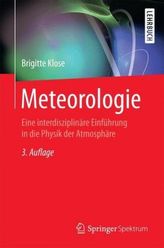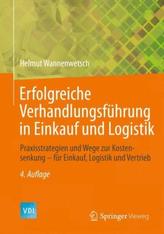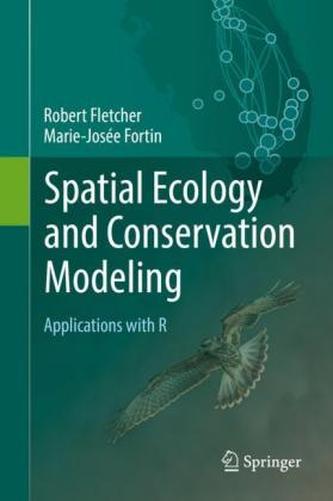Spatial Ecology and Conservation Modeling with R
9
%
3211 Kč 3 547 Kč
Sleva až 70% u třetiny knih
Chapter 1: Introduction to spatial ecology and its relevance for conservation 1.1 What is spatial ecology? 1.2 The importance of space in ecology 1.3 The importance of space in conservation 1.4 The growth of frameworks for spatial modeling 1.5 The path ahead References
Part I: Quantifying spatial pattern in ecological data
Chapter 2: Scale 2.1 Introduction 2.2 Key concepts and approaches 2.2.1 Scale defined and clarified 2.2.2 Why is spatial scale important? 2.2.3 Multi-scale and multi-level quantitative problems 2.2.4 Spatial scale and study design 2.3 Examples in R 2.3.1 Packages in R 2.3.2 The data 2.3.3 A simple simulated example 2.3.4 Multi-scale species response to land cover 2.4 Next steps and advanced issues 2.4.1 Identifying characteristic scales beyond species-environment relationships 2.4.2 Sampling and scale 2.5 Conclusions References
Chapter 3: Land-cover pattern and change 3.1 Introduction 3.2 Key concepts 3.2.1 Land use versus land cover 3.2.2 Conceptual models for land-cover and habitat change 3.2.3 Habitat loss and fragmentation 3.2.4 Quantifying land-cover pattern 3.3 Examples in R 3.3.1 Packages in R 3.3.2 The data 3.3.3 Quantifying land-cover variation at different scales 3.3.4 Simulating land-cover: neutral landscapes 3.4 Next steps and advanced issues 3.4.1 Testing for pattern differences between landscapes 3.4.2 Land-cover quantification via image processing 3.4.3 Categorical versus continuous metrics 3.5 Conclusions References
Chapter 4: Spatial dispersion and point data 4.1 Introduction 4.2 Key concepts and approaches 4.2.1 Characteristics of point patterns 4.2.2 Summary statistics for point patterns 4.2.3 Common statistical models for point patterns 4.3 Examples in R 4.3.1 Packages in R 4.3.2 The data 4.3.3 Creating point pattern data and visualizing it 4.3.4 Univariate point patterns 4.3.5 Marked point patterns 4.3.6 Inhomogeneous point processes and point process models 4.3.7 Alternative null models 4.3.8 Simulating point processes 4.4 Next steps and advanced issues 4.4.1 Space-time analysis 4.4.2 Replicated point patterns 4.5 Conclusions References
Chapter 5: Spatial dependence and autocorrelation 5.1 Introduction 5.2 Key concepts and approaches 5.2.1 The causes of spatial dependence 5.2.2 Why spatial dependence matters 5.2.3 Quantifying spatial dependence 5.3 Examples in R 5.3.1 Packages in R 5.3.2 The data 5.2.3 Correlograms 5.3.3 Variograms 5.3.4 Kriging 5.3.5 Simulating spatially autocorrelated data 5.3.6 Multiscale analysis 5.4 Next steps and advanced issues 5.4.1 Local spatial dependence 5.4.2 Multivariate spatial dependence 5.5 Conclusions References
Chapter 6: Accounting for spatial dependence in ecological data 6.1 Introduction 6.2 Key concepts and approaches 6.2.1 The problem of spatial dependence in ecology and conservation 6.2.2 The generalized linear model and its extensions 6.2.3 General types of spatial models 6.2.4 Common models that account for spatial dependence 6.2.5 Inference versus prediction 6. 3 Examples in R 6.3.1 Packages in R 6.3.2 The data 6.3.3 Models that ignore spatial dependence 6.3.4 Models that account for spatial dependence 6.4 Next steps and advanced issues 6.4.1 General Bayesian models for spatial dependence 6.4.2 Detection errors and spatial dependence 6.5 Conclusions References
Part II: Ecological responses to spatial pattern and conservation
Chapter 7: Species distributions 7.1 Introduction 7.2 Key Concepts and approaches 7.2.1 The niche concept 7.2.2 Predicting distributions or niches? 7.2.3 Mechanistic versus correlative distribution models 7.2.4 Data for correlative distribution models 7.2.5 Common types of distribution modeling techniques 7.2.6 Combining models: ensembles 7.2.7 Model evaluation 7.3 Examples in R 7.3.1 Packages in R 7.3.1 The data 7.3.2 Prepping the data for modeling 7.3.2 Contrasting models 7.3.3 Interpreting environmental relationships 7.3.4 Model evaluation 7.3.5 Combining models: ensembles 7.4 Next steps and
| Autor: | Fletcher, Robert |
| Nakladatel: | Springer, Berlin |
| Rok vydání: | 2019 |
| Jazyk : | Angličtina |
| Vazba: | Hardback |
| Počet stran: | 450 |
Mohlo by se vám také líbit..
-

Hebräisches und Aramäisches Handwörte...
Gesenius, Wilhelm
-

Meteorologie
Klose, Brigitte
-

Kurzlehrbuch Psychiatrie
Bandelow, Borwin
-

Pilates - A Teachers' Manual
Geweniger, Verena
-

Erste Hilfe - Chemie und Physik für M...
Schatz, Jürgen
-

Fundamental Algorithms in Computation...
Pulliam, Thomas H.
-

Der Luzifer-Effekt
Zimbardo, Philip G.
-

Deutsch für Pflegekräfte
Schrimpf-Oehlsen, Ulrike
-

Professional Sitecore 8 Development
Wicklund, Phil
-

DBT-A- Manual
Fleischhaker, Christian
-

Unternehmenskultur fördern
Abbate, Sandro
-

Erfolgreiche Verhandlungsführung in E...
Wannenwetsch, Helmut H.
-

Praxisbuch Biofeedback und Neurofeedback
Haus, Karl-Michael
-

Einführung in die Soziologie
Schäfers, Bernhard
-

Anästhesie, Intensivmedizin, Notfallm...
Kretz, Franz-Josef
-

Sportkardiologie
Niebauer, Josef





